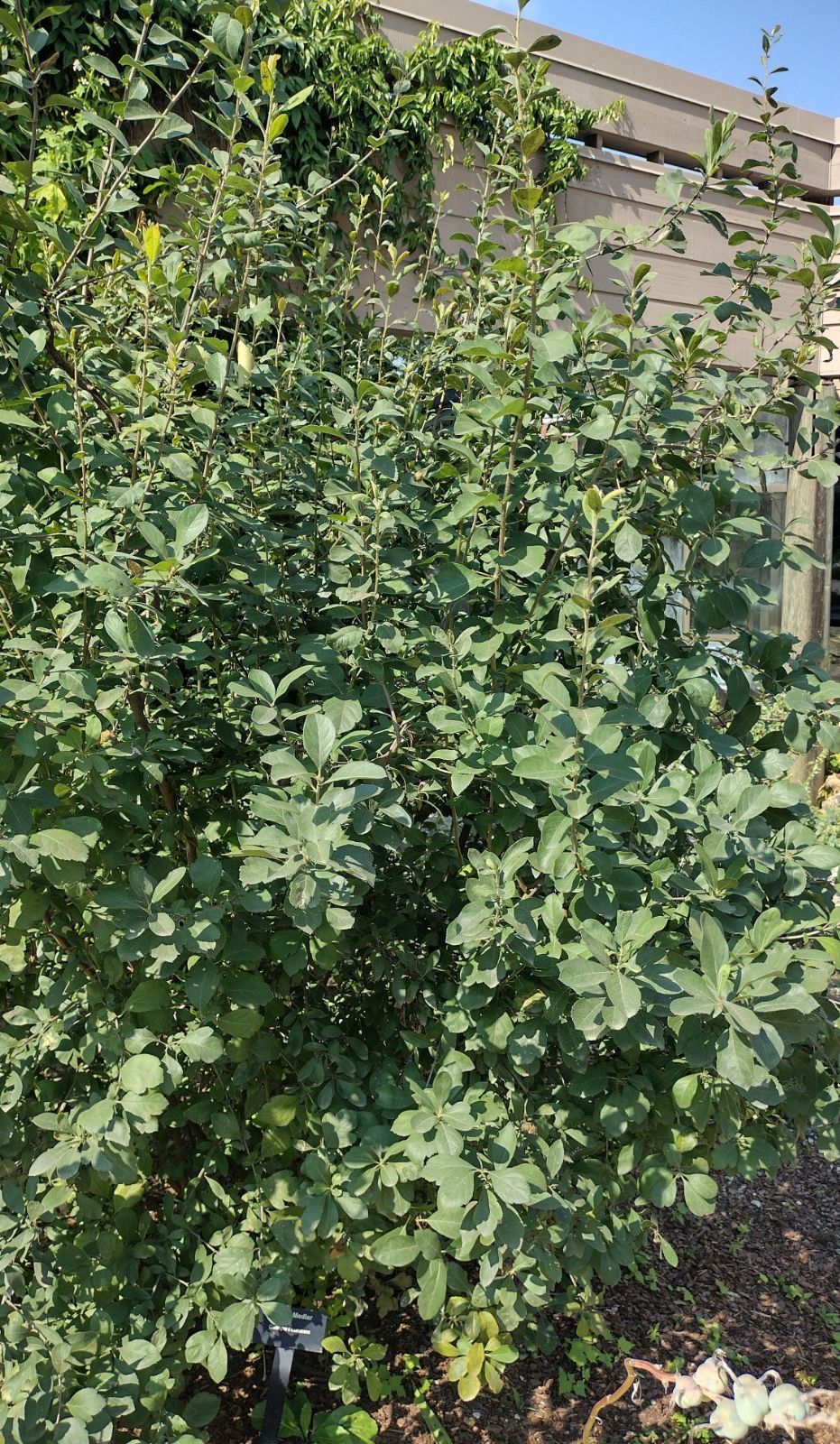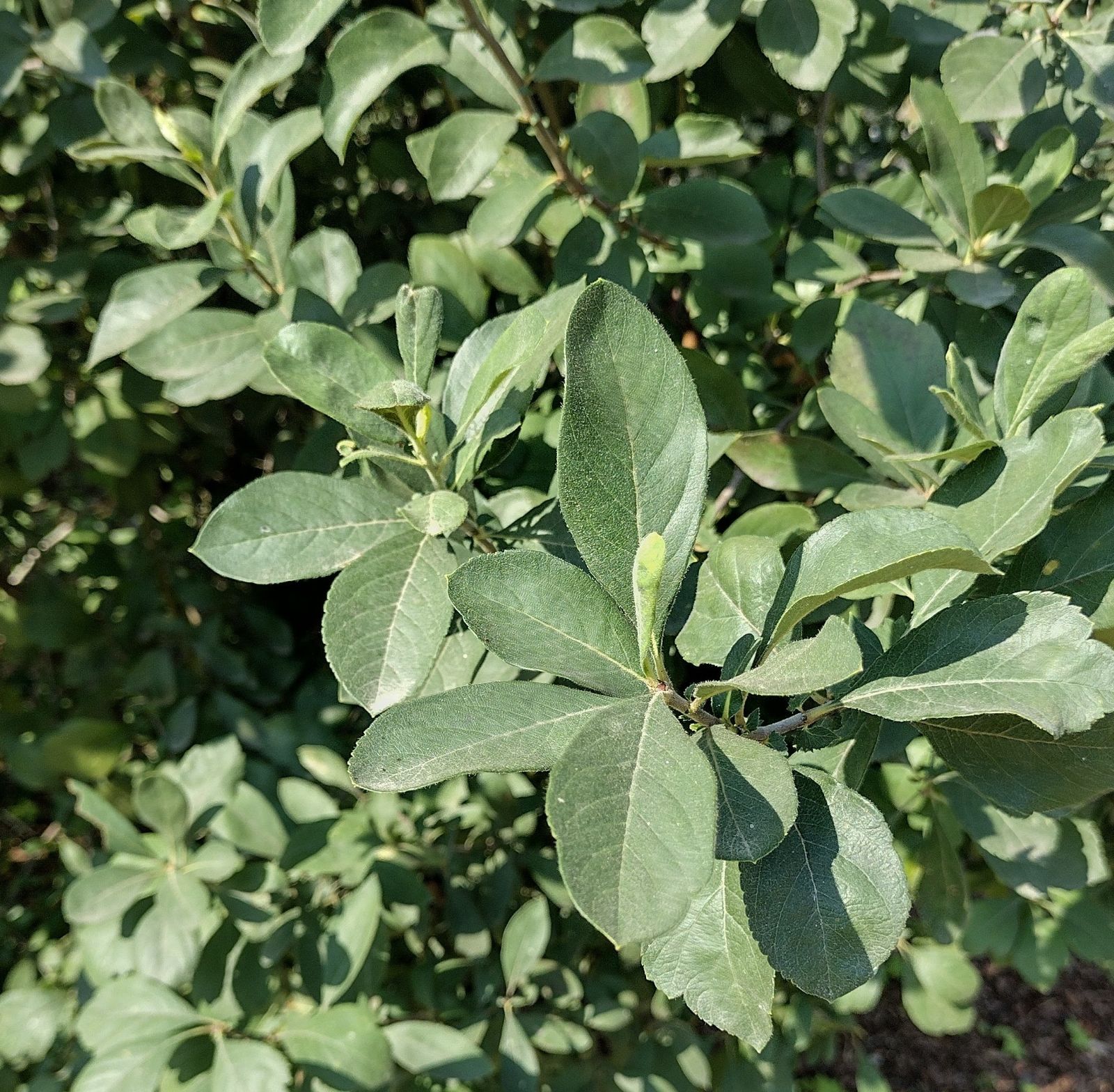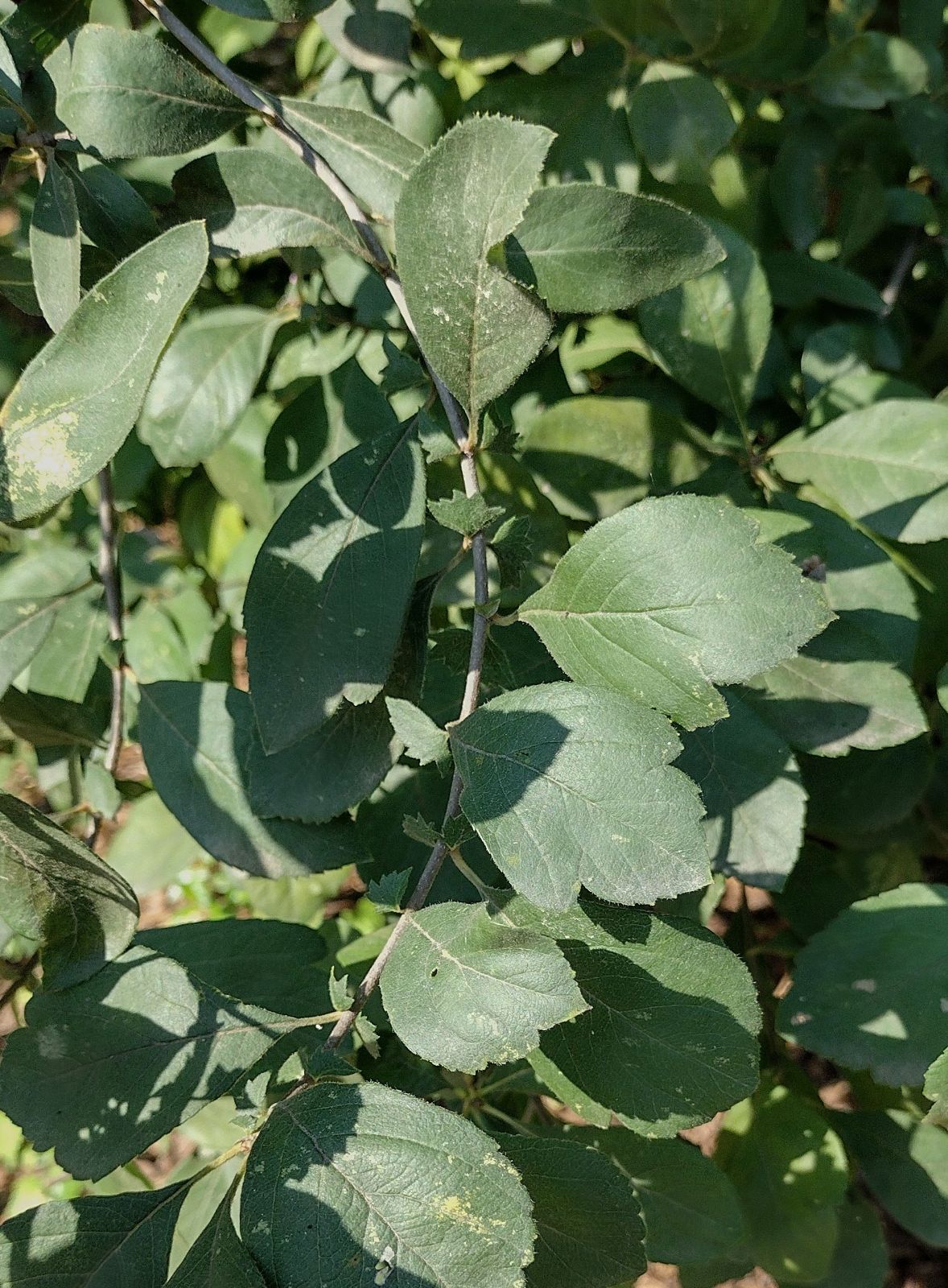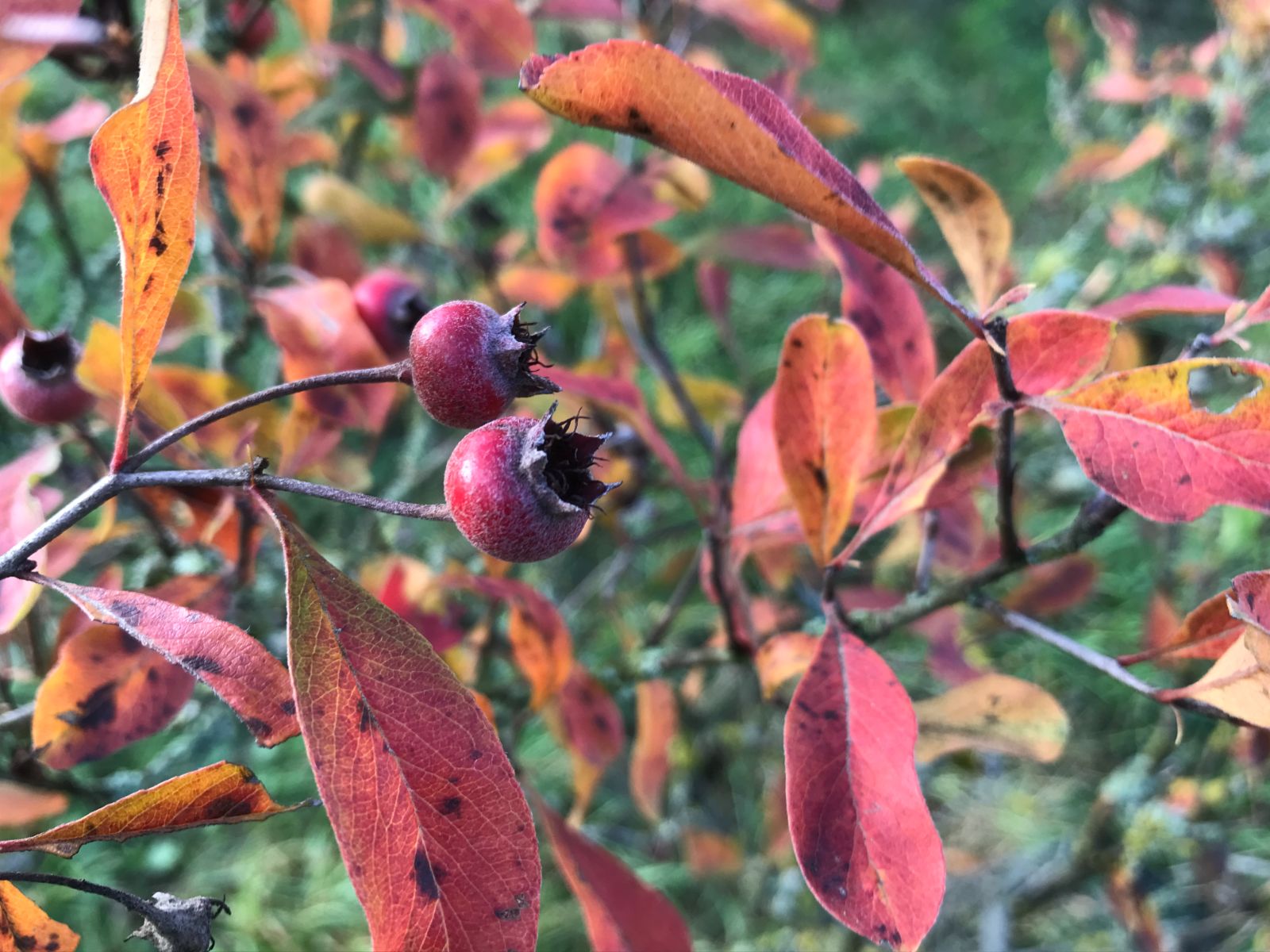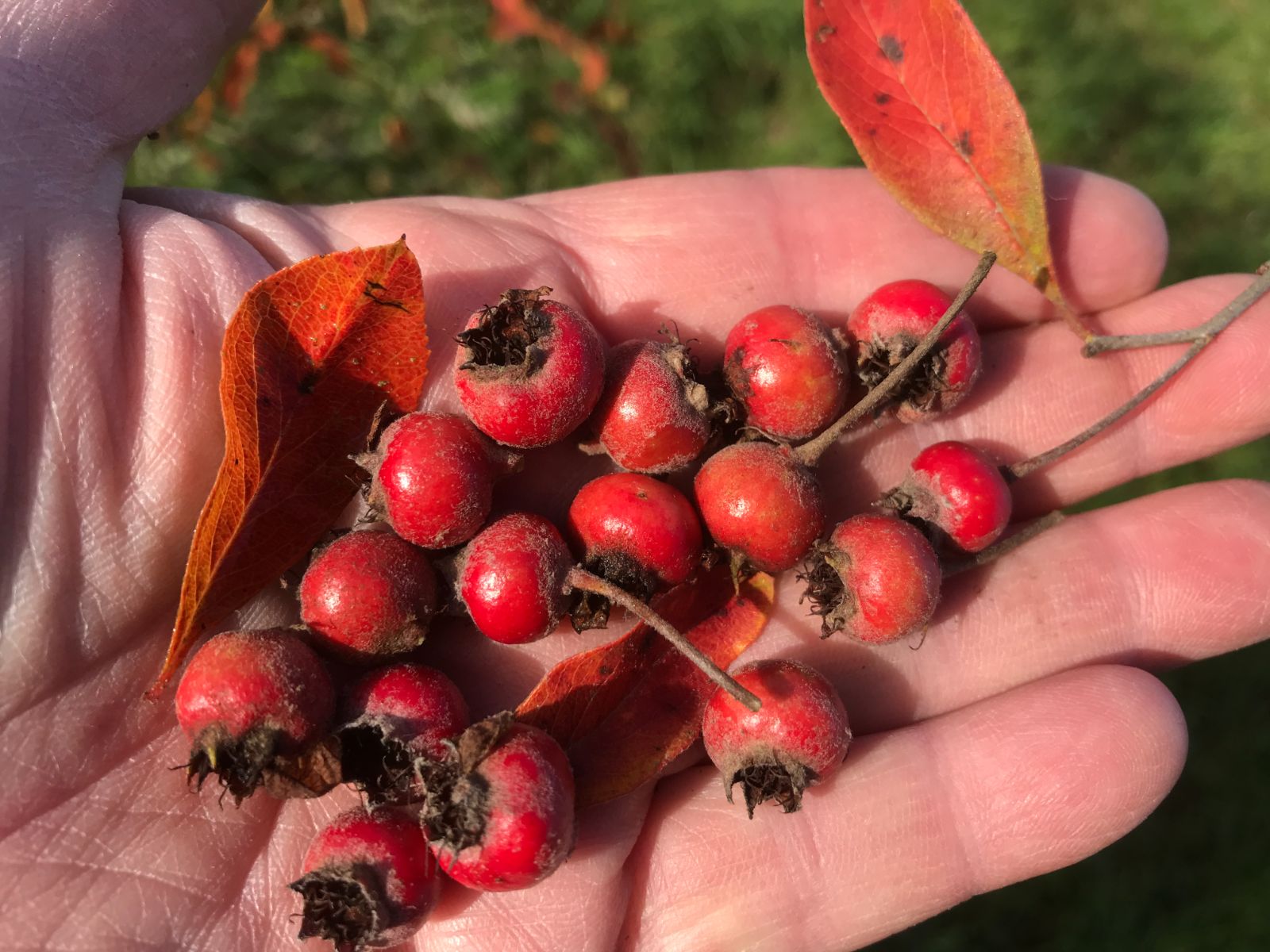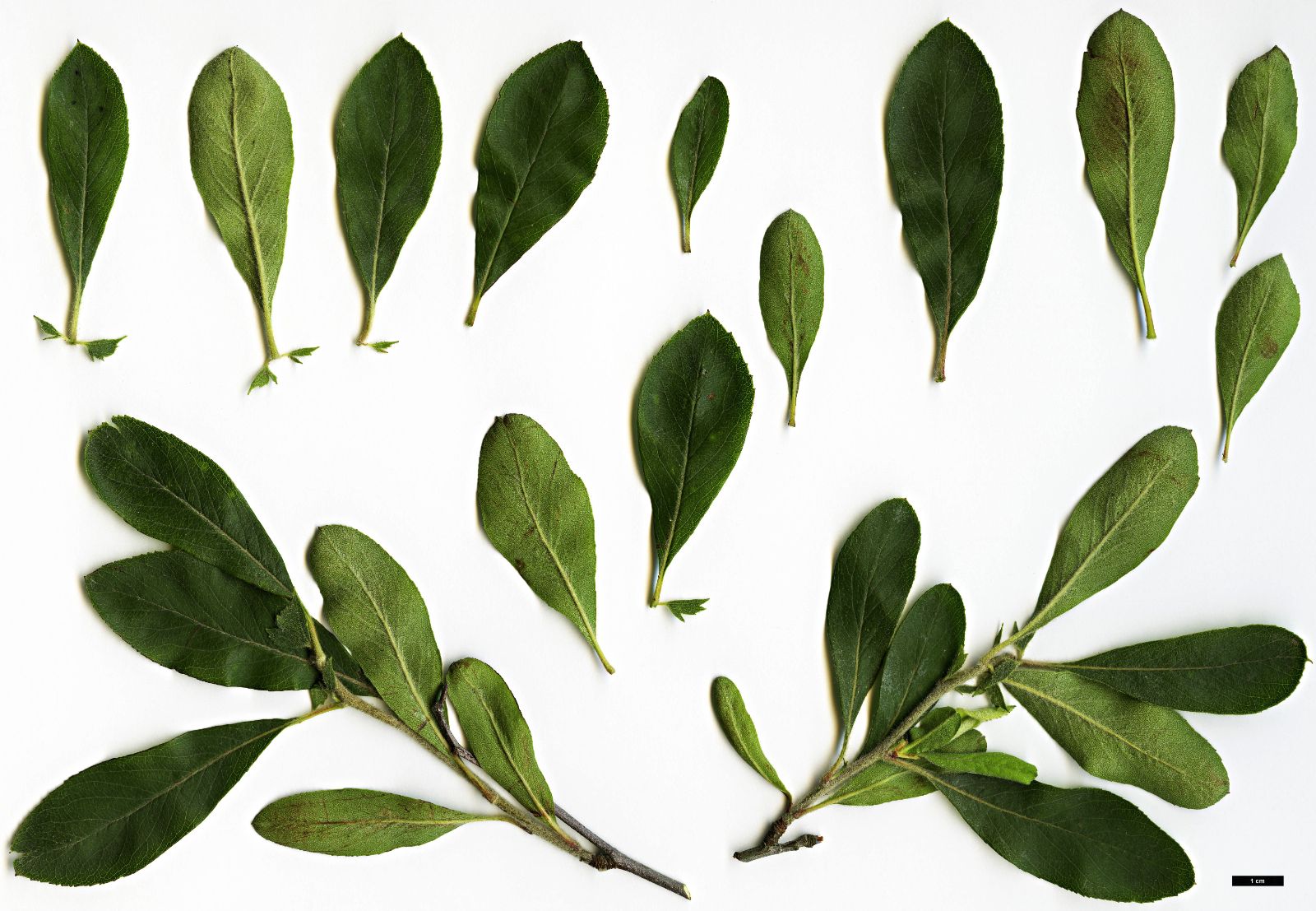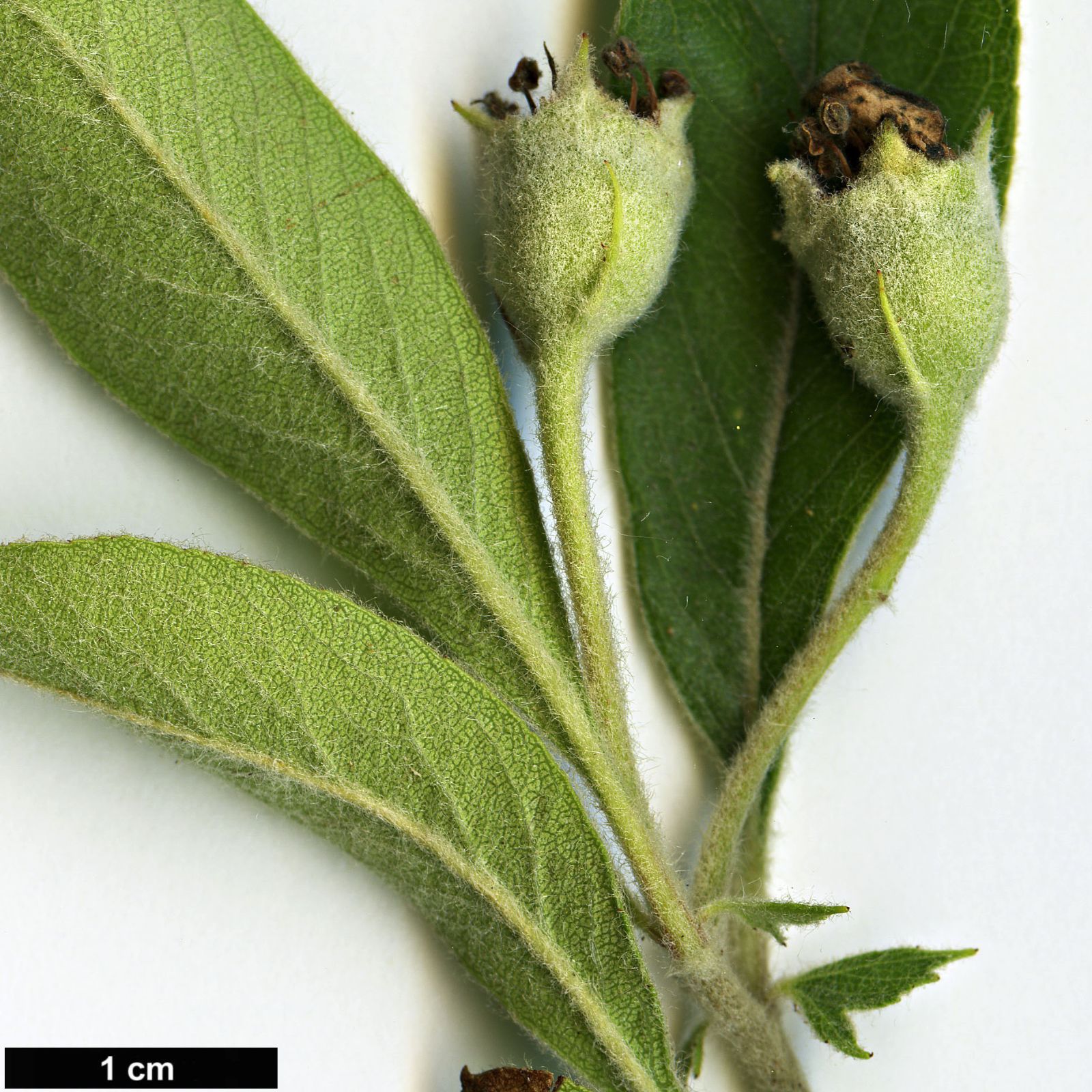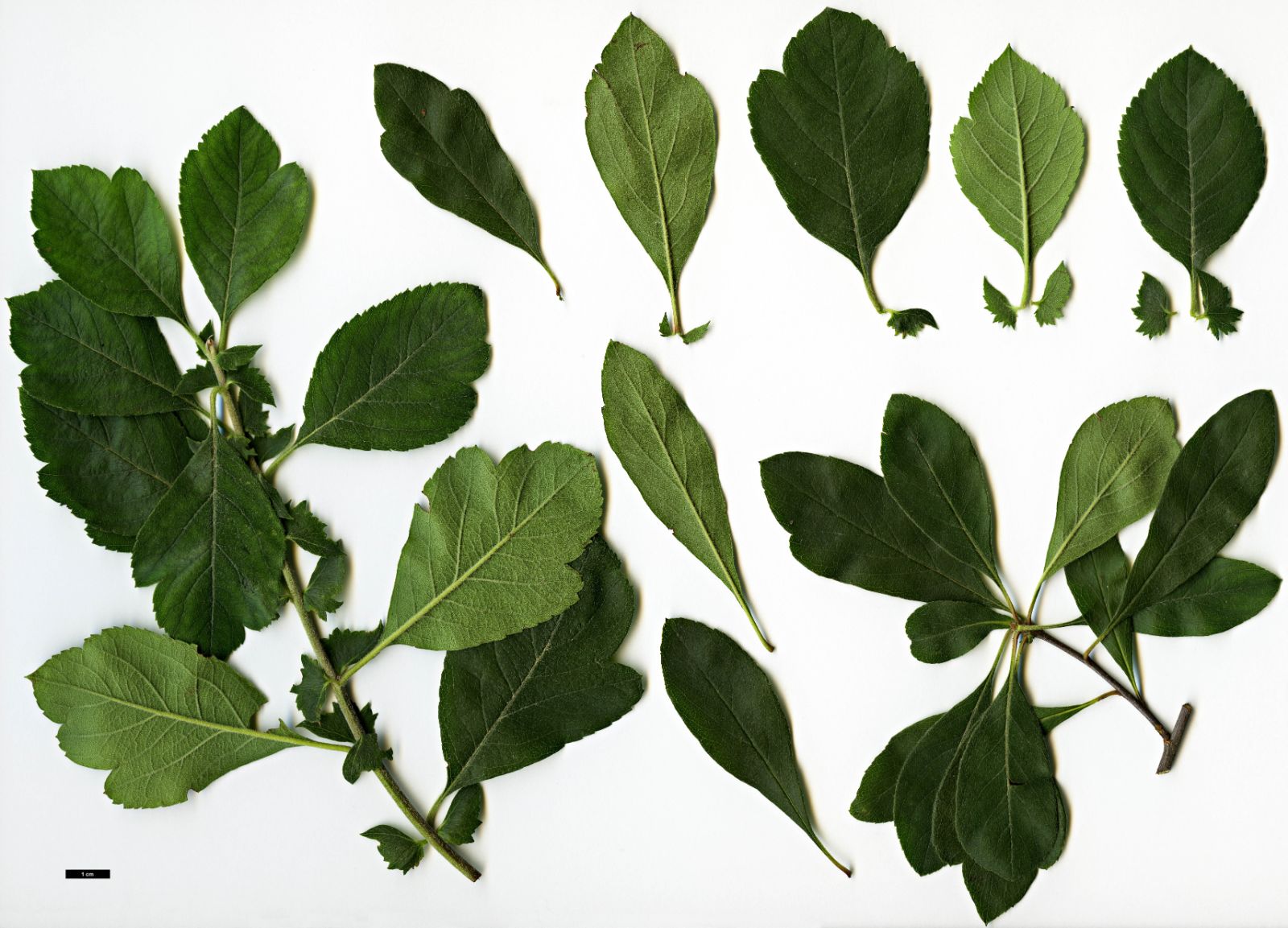× Crataemespilus canescens
Sponsor
Kindly sponsored by
HSH The Prince d'Arenberg

Credits
Julian Sutton (2023)
Recommended citation
Sutton, J. (2023), '× Crataemespilus canescens' from the website Trees and Shrubs Online (treesandshrubsonline.
Genus
- × Crataemespilus
- Mespilus germanica × Crataegus brachyacantha
Common Names
- Stern's Medlar
Synonyms
- Mespilus canescens J.B. Phipps
- Crataegus × canescens (J.B. Phipps) T.A. Dickinson & E.Y.Y. Lo
Deciduous shrub, 2–5 m. Branchlets hoary when young, sometimes with a few 2–4 cm thorns. Bark pale, exfoliating in irregular strips. Leaves narrowly elliptic to narrowly obovate, 2–4 cm long, margins finely serrate towards the apex, surfaces hoary. Flowers usually in 2–6-flowered racemes, terminal on spur shoots, either lateral or terminal on long shoots, about 2 cm across across; sepals triangular, 25–30% petal length, margins entire, hoary beneath; petals white, cupped, notched; stamens ~20, anthers pale yellow; styles 5. Fruit 0.8–1.2 cm across, more or less spherical, red, glabrescent, flesh containing 5 hard pyrenes; hypanthial opening 30–50% width of fruit. Flowering May (United States). (Phipps 2016).
Distribution United States Arkansas, one site
Habitat Woodland
USDA Hardiness Zone 6-8
RHS Hardiness Rating H5
In the arcane world of Medlar hybrids, × Crataemespilus canescens is a newcomer which promises the gardener more than most. A multi-stemmed shrub, it is desirable for its copious white flowers in spring, small, shiny red fruits (‘surprisingly sweet’ – Enzenbacher 2019), and pale, exfoliating bark with tints of olive and cream. A monograph of cultivated Crataegus describes it as ‘arguably the most exquisite ornamental treated in this book’ (Phipps, O’Kennon & Lance 2003). However, while it is quite widely growable, further garden experience is needed to discover where such fine performance is possible. Warm summers are probably important.
A natural hybrid between Crataegus brachyacantha and cultivated or naturalized Mespilus germanica, it is known in the wild only from a single wood in eastern Arkansas. First noted as an unidentified plant by naturalist Jane Stern in 1969 (Enzenbacher 2019), it remained un-named until North American Crataegus specialist James Phipps described it as a new species in Mespilus, M. canescens (Phipps 1990). Since Mespilus was previously thought to be a monotypic genus found in southwest Asia and southeastern Europe, this caused considerable interest, as well as conservation efforts. Molecular evidence later revealed it as an intergeneric hybrid (Lo, Stefanović & Dickinson 2007), with Phipps (2016) making the new combination × Crataemespilus canescens. This interpretation is not controversial, although it is sometimes still seen listed under Mespilus.
Its status as a rare North American endemic, its short spell as a novel Medlar species, and the promise of an attractive garden plant contributed to a quick spread in cultivation on both sides of the Atlantic, although mostly in more botanically orientated collections. However, in cool maritime areas such as the British Isles it seems to require a warm, sunny position to perform well; it can be trained on a sunny wall or fence (Edwards & Marshall 2019). Eike Jablonski, who introduced it to Luxembourg from North America in 2006 as scion wood, and has distributed it among European botanic gardens and arboreta, singles out red autumn colour as a fine feature (pers. comm. 2023).

